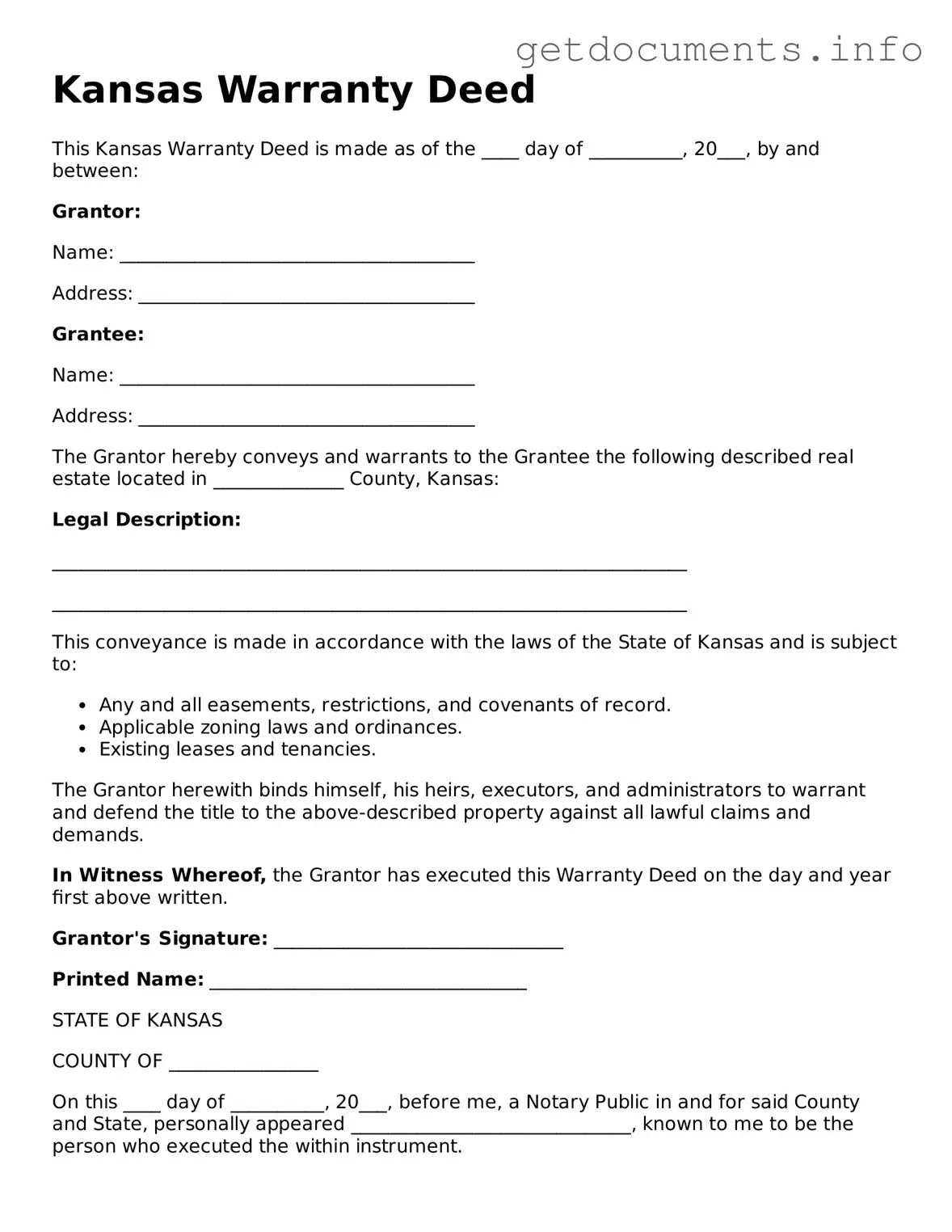The Kansas Deed form is a crucial legal document that facilitates the transfer of property ownership within the state of Kansas. This form serves multiple purposes, including the conveyance of real estate, the clarification of ownership rights, and the establishment of legal obligations between parties. It is essential for both buyers and sellers to understand the various types of deeds available, such as warranty deeds and quitclaim deeds, as each serves a different function in property transactions. Additionally, the form requires specific information, including the names of the parties involved, a detailed description of the property, and any relevant consideration for the transfer. Proper execution of the Kansas Deed form ensures that the transaction is legally binding and protects the interests of all parties. Understanding the nuances of this document is vital for anyone looking to navigate property transactions in Kansas effectively.
